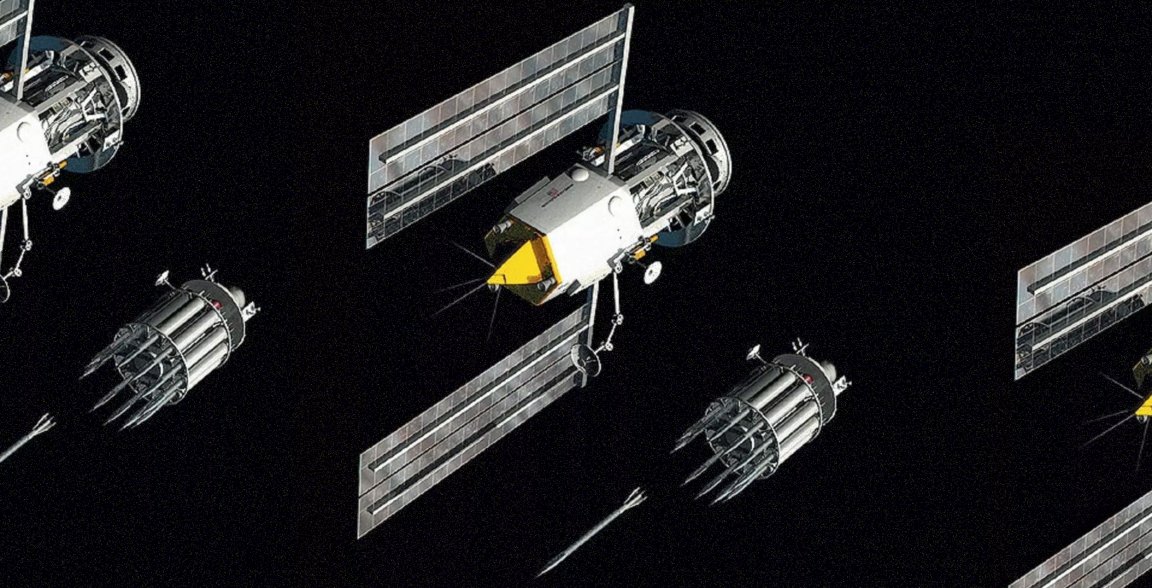
Lazy Dog Bombs
The Vietnam War began in 1955 and wouldn’t see its conclusion until 1975. One can only imagine the number of weapons used over the twenty years before the conflict came to an end. Yet one weapon in particular — used by the United States — didn’t utilize fire or gunpowder to do damage. All it needed was gravity and a bit of metal.
Dubbed “Lazy Dog” bombs, these kinetic weapons were small, missile-shaped tubes of metal about 2 inches in length and less than an inch in diameter. Outfitted with fins, they would be dropped by the hundreds on U.S. enemies, who were almost certainly ill-prepared for such a bombardment.

As reported by We Are The Mighty, these Lazy Dog bombs would be dropped by planes from thousands of feet in the air, and would reach speeds up to 500 mph. From a height of 3,000 feet, they’d be capable of punching a 9-inch-deep hole into concrete. Needless to say, you wouldn’t want to be hit by one.
Lazy Dogs bombs don’t have a monopoly on this concept; if you want to count weapons that simply relied on gravity, look no further than the trebuchet. Task & Purpose writes that U.S. Army veteran and Boeing enginner Jerry Pournelle also had a similar idea, though his involved using longer pieces of metal, and dropping them from sub-orbital heights. Interestingly enough, Pournelle had these thoughts in the 1950s, in the early years of the Vietnam War.
Project Thor
Pournelle’s idea came to have the name “Project Thor,” though it was eventually given the much more menacing title of “rods from god.” Regardless of the name used, the potential destruction was enormous. As explained by Popular Science, the rods from god were tungsten rods made to be nearly 20 feet in length and a foot in diameter. A pair of satellites would be placed thousands of miles above the earth, with one controlling the targeting and communications, while the other would carry an untold number of rods.
Starting with those on the ground monitoring and controlling the satellites, and ending with the rods’ impact, the whole ordeal could play out within 15 minutes. The rods from god could achieve speeds multiple time the speed of sound; the nine inches of penetration the lazy dog bombs could achieve pales in comparison to hundreds of feet their larger counterparts could travel.
Best of all? Project Thor could impact with the force of a nuclear weapon, without the nuclear fallout that would affect the surrounding environment and any people unfortunate enough to be there.
The Modern Day Equivalent
Project Thor was never turned into a real weapon, as they were simply too expensive to launch, but the concept of a weapon based on kinetic energy hasn’t gone away. In fact, it’s seeing a bit of a resurgence. In 2013, the U.S. Air Force 846th Test Squadron test fired a “Kinetic Energy Projectile warhead” that moved 3,500 feet per second, or three times the speed of sound. Earlier this month, the Navy tested a long-range electromagnetic rail gun and its electromagnetic hyper velocity projectile. According to Scout, it can fire a kinetic warhead “at speeds greater than 5,000 miles an hour.”
Speaking to Task & Purpose, Matt Weingart, weapons program development manager at Lawrence Livermore, explained that while a traditional bomb relies on chemical explosives to do damage, kinetic weapons only need speed and mass.

“[For traditional bombs] the violence comes from the chemical explosive inside that bomb sending off a blast wave, followed by the fragments of the bomb case,” said Weingart. “But the difference with kinetic energy projectiles is that the warhead arrives at the target moving very, very fast — the energy is there to propel those fragments without the use of a chemical explosive to accelerate them. The more mass, the more violence.”
It’s unclear how much money the U.S. military might save from switching to kinetic weapons, as well as just how far away we are from practical applications of kinetic weaponry in real world scenarios. Yet at the rate that technology is advancing, it’s only a matter of time before we incorporate space into warfare, and likely find new ways to increase the power of our weaponry as we do.